Sarah Sundin's Blog, page 468
July 27, 2012
Today in World War II History
70 Years Ago—July 27, 1942: British press attack at El Alamein, but fail to make gains against Germans.
Published on July 27, 2012 03:00
July 26, 2012
Book Beat - Joy Takes Flight by Bonnie Leon
 If you've enjoyed the adventures of high-flying Depression-era pilot Kate Evans in Bonnie Leon's Touching the Clouds and Wings of Promise, you'll love
Joy Takes Flight
, the conclusion to the Alaskan Skies series.
If you've enjoyed the adventures of high-flying Depression-era pilot Kate Evans in Bonnie Leon's Touching the Clouds and Wings of Promise, you'll love
Joy Takes Flight
, the conclusion to the Alaskan Skies series.Joy Takes Flight starts with the long-awaited wedding of Kate Evans and physician Paul Anderson. Married life offers them more exciting Alaskan adventures, but also some bumps and bruises. Should Kate continue in her dangerous job as an Alaskan bush pilot? Will Paul ever come to grips with whatever tragedy led him to flee San Francisco years earlier? Will pregnancy unite them - or raise new issues?
Joy Takes Flight is a gripping story filled with adventure and excitement, but it also shows wonderful character development for both Kate and Paul as married life forces them to stretch. Those who have enjoyed the first two books in this series (and they DO have to be read in order) will love watching the sub-plots come to satisfying - although never easy - conclusions. I highly recommend this series.
Published on July 26, 2012 11:22
Today in World War II History
70 Years Ago—July 26, 1942: British begin rationing chocolate and candy. Maj. Gen. Millard Harmon takes command of US Army Forces in South Pacific Area, to be based at Noumea, New Caledonia.
Published on July 26, 2012 03:00
July 25, 2012
Today in World War II History
70 Years Ago—July 25, 1942: New songs in Top Ten: “He Wears a Pair of Silver Wings” and “Be Careful, It’s My Heart.”
Published on July 25, 2012 03:00
July 24, 2012
Today in World War II History
70 Years Ago—July 24, 1942: German Army Group A takes Rostov, Ukraine.
Published on July 24, 2012 03:00
July 23, 2012
Make It Do - Gasoline Rationing in World War II
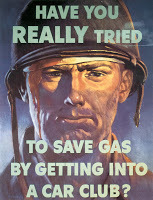 Seventy years ago this week, gasoline rationing began in the United States. Rationing was an important part of life in America during World War II. However, the government was apprehensive about gasoline rationing. As a symbol of freedom of movement, the automobile represented everything American, and politicians feared riots and rebellion if they curtailed that freedom.
Seventy years ago this week, gasoline rationing began in the United States. Rationing was an important part of life in America during World War II. However, the government was apprehensive about gasoline rationing. As a symbol of freedom of movement, the automobile represented everything American, and politicians feared riots and rebellion if they curtailed that freedom.Rubber Shortage
What tipped the balance wasn't a gasoline shortage but a rubber shortage. The United States didn't have enough rubber for military needs, much less civilian needs. While tires and other rubber items were rationed, the simplest way to reduce wear and tear on tires was to restrict driving.
Drive Less
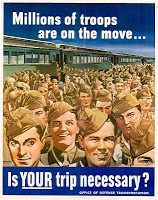 In 1942, a nationwide Victory Speed of 35 mph was instituted, since higher speeds remove tread more quickly. People were encouraged to use Victory Bicycles (except new bictycles weren't manufactured), public transportation, and their own two feet. Commuters were told to "Carry more to win the war," and to share rides or form car clubs (the term "car pool" wasn't used yet). Employers experimented with staggered shifts to reduce traffic - and therefore, gasoline use. Pleasure driving was discouraged and the "Vacation at Home" was promoted, not just to save gas and rubber, but due to the strain on the nation's train system by military transport.
In 1942, a nationwide Victory Speed of 35 mph was instituted, since higher speeds remove tread more quickly. People were encouraged to use Victory Bicycles (except new bictycles weren't manufactured), public transportation, and their own two feet. Commuters were told to "Carry more to win the war," and to share rides or form car clubs (the term "car pool" wasn't used yet). Employers experimented with staggered shifts to reduce traffic - and therefore, gasoline use. Pleasure driving was discouraged and the "Vacation at Home" was promoted, not just to save gas and rubber, but due to the strain on the nation's train system by military transport.Fewer Cars
Car manufacturing stopped on Jan. 1, 1942, and no new automobiles could be purchased after Feb. 22, 1942. A small stock was held in reserve for critical replacements. Auto manufacturers converted assembly lines to produce jeeps, tanks, and bombers, while the American consumer made do. Car theft - and tire theft - became a large problem. On July 1, 1945, automobile production was allowed again, and the first car rolled off the assembly line on Aug. 30, 1945 - a Hudson Super Six coupe.
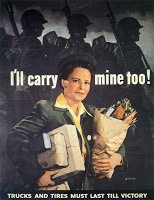 Gasoline Rationing BeginsVoluntary programs didn't do the job. The rubber situation became critical, and on May 15, 1942, 8 million motorists in seventeen Eastern states registered for gas ration cards. Rationing began on the East Coast on July 22, 1942. These states were chosen due to better public transportation and shorter distances traveled, and because the U-boat menace off the East Coast made transport of oil and gasoline more hazardous. However, this also wasn't enough, and on Dec. 1, 1942, rationing went into effect nationwide. The program would continue until Aug. 18, 1945.
Gasoline Rationing BeginsVoluntary programs didn't do the job. The rubber situation became critical, and on May 15, 1942, 8 million motorists in seventeen Eastern states registered for gas ration cards. Rationing began on the East Coast on July 22, 1942. These states were chosen due to better public transportation and shorter distances traveled, and because the U-boat menace off the East Coast made transport of oil and gasoline more hazardous. However, this also wasn't enough, and on Dec. 1, 1942, rationing went into effect nationwide. The program would continue until Aug. 18, 1945.Stickers and Coupons
The American public learned to deal with an elaborate system. Every motorist was issued a windshield sticker displaying a letter. Some of these categories changed, emerged, or were eliminated during the war:
A: most motorists - 3 gallons/week, reduced to 2 gal/wk March 22, 1944B: for war workers who shared rides with 3 or more passengers - 8 gal/wkC: essential occupational use, such as physicians, clergy, and mail carriersD: motorcyclesE: emergency vehicles such as ambulances, police, fire - unlimitedR: non-highway use, such as farm vehicles - unlimitedT: truckers, institued January 1, 1944 - unlimitedX: a controversial sticker for VIPs - unlimitedAt the gas station, the attendant checked the windshield sticker and took the required number of ration book coupons - also marked with the appropriate letter. Of course, payment was also required - about 19 cents/gallon.
Gas Shortage
Despite rationing, a serious gas shortage developed early in 1944. The high military use and restricted shipping contributed to this problem. In January 1944 on the West Coast, very little gasoline was available - and none at all in Sacramento, California, not even for emergency vehicles. On March 22, 1944, "A" class drivers were further restricted to 2 gallons/week.
Not everyone complied. The black market became quite profitable, cases of gas siphoning made the front page of small-town newspapers, and several ration book forgery rings were broken up.
How do you think modern-day Americans would deal with these restrictions?
Published on July 23, 2012 05:00
Today in World War II History
70 Years Ago—July 23, 1942: At Treblinka concentration camp, Nazis begin mass extermination by gassing.
Published on July 23, 2012 03:00
July 22, 2012
Today in World War II History
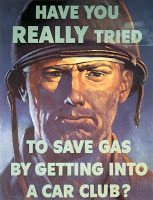 70 Years Ago—July 22, 1942: In US gasoline rationing coupons issued in 17 eastern states, rationing begins.
70 Years Ago—July 22, 1942: In US gasoline rationing coupons issued in 17 eastern states, rationing begins.
Published on July 22, 2012 03:00
July 21, 2012
Today in World War II History
70 Years Ago—July 21, 1942: Japanese invade Papua New Guinea at Gona, advance south toward Port Moresby.
Published on July 21, 2012 03:00
July 20, 2012
Giveaway Winner - Lizzie and the Guernsey Gang by April Gardner
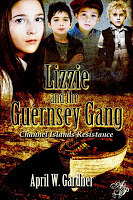 On Monday I featured April Gardner's delightful World War II novel for upper-elementary children,
Lizzie and the Guernsey Gang
. I used a random number generator to choose a winner from those who commented, including on Goodreads.
On Monday I featured April Gardner's delightful World War II novel for upper-elementary children,
Lizzie and the Guernsey Gang
. I used a random number generator to choose a winner from those who commented, including on Goodreads.The winner is Noelle the Dreamer! Thank you for leaving your email address, Noelle. I'll contact you so I can send you the book. Enjoy!
[image error]
Published on July 20, 2012 10:53



